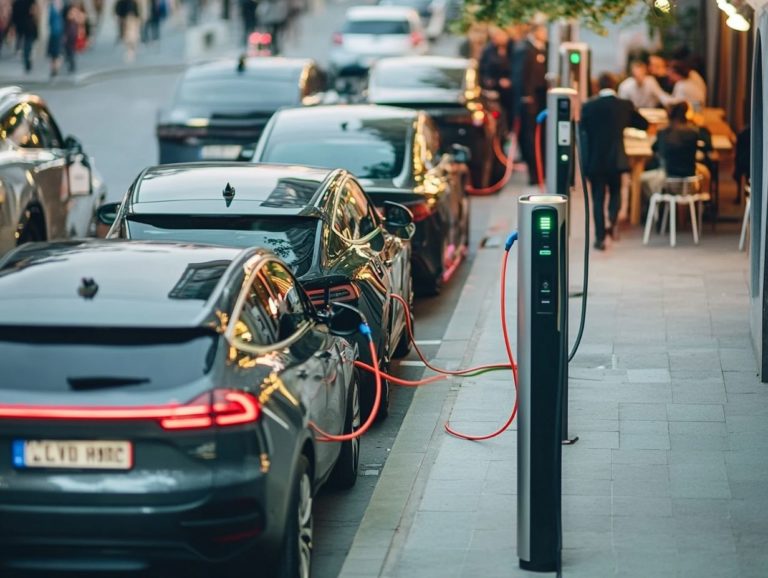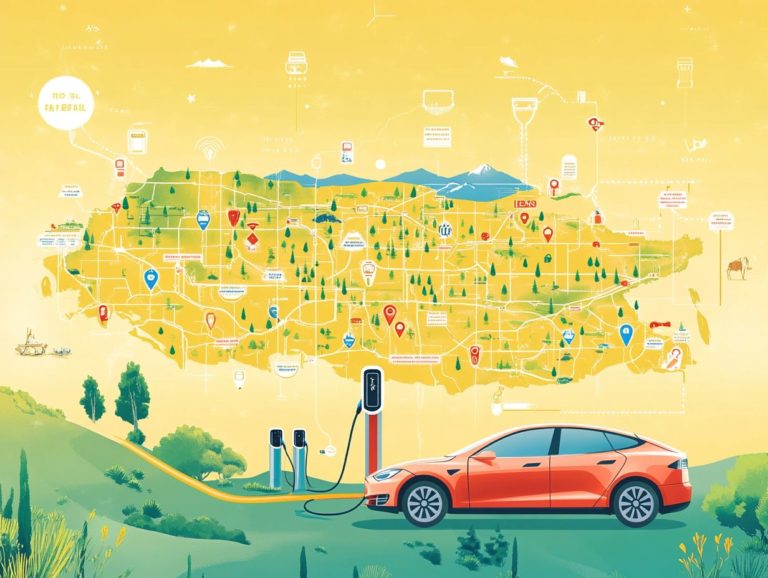5 Ways to Reduce Charging Costs for EVs
As electric vehicles (EVs) continue to rise in popularity, understanding charging costs is essential for you as an owner.
This article unveils five practical strategies to help you reduce your EV charging expenses. By optimizing your charging times, using public stations, and exploring solar power options, you can significantly impact your budget.
You ll also discover insights on the benefits of owning an EV, the diverse charging options available, and how government policies affect your charging experience.
Dive in to uncover how to maximize your savings while enjoying the perks of electric driving!
Contents
- Key Takeaways:
- 1. Charge Off-Peak for Savings
- 2. Utilize Public Charging Stations
- 3. Invest in Solar Panels
- 4. Use Level 1 Charging When Possible
- 5. Take Advantage of Charging Incentives
- What Are the Benefits of Owning an Electric Vehicle?
- What Are the Different Types of Charging Options for EVs?
- How Can One Determine the Best Charging Strategy for Their EV?
- What Are the Common Misconceptions About Charging Costs for EVs?
- How Can Government Policies and Regulations Impact Charging Costs for EVs?
- What Are the Future Predictions for Charging Costs for EVs?
- Frequently Asked Questions
- How can I reduce charging costs for my EV?
- What are smart charging strategies for EVs?
- How can public charging stations help reduce charging costs for EVs?
- Why is taking advantage of off-peak electricity rates important for reducing charging costs?
- How does maintaining proper tire pressure help reduce charging costs for EVs?
- What is regenerative braking and how does it help reduce charging costs for EVs?
Key Takeaways:
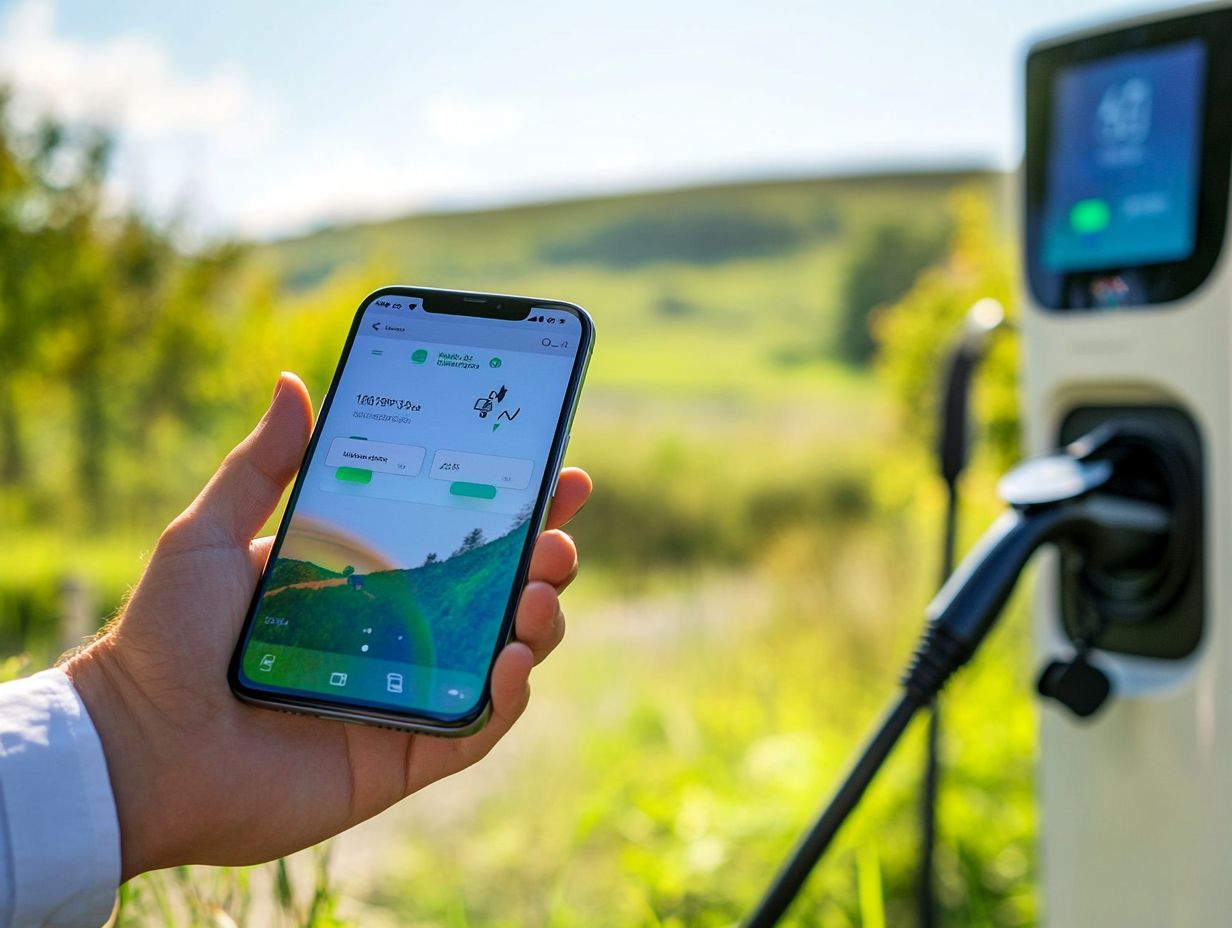
- Charge your EV during off-peak hours to save on overall charging costs.
- Utilize public charging stations, which may offer free or discounted rates.
- Invest in solar panels to generate your own electricity for charging.
1. Charge Off-Peak for Savings
Charging your electric vehicle (EV) during off-peak hours can drastically lower your charging bills, as utility rates typically dip during these times. This strategy not only reduces your costs but also helps manage electricity demand more effectively, making it essential to explore the best charging solutions for new EV owners and promoting a sustainable lifestyle.
By taking advantage of lower rates often offered in the evening or overnight, you can enjoy reduced electricity costs and redirect those savings toward other priorities. Many regions provide time-of-use rates, which can lead to reductions of 30% or more when you charge during designated off-peak periods.
Government initiatives, including incentives and rebates for off-peak charging, encourage more users to embrace this beneficial practice. Using smart charge apps allows you to easily schedule your charging sessions, maximizing lower rates while optimizing your vehicle s battery usage.
This seamless technology integration supports energy conservation and fosters a responsible approach to electric vehicle ownership.
2. Utilize Public Charging Stations
Using public charging stations is crucial for you as an electric vehicle owner. It significantly expands your charging options and enhances your vehicle s flexibility, especially in urban environments.
These stations are strategically located in high-traffic areas like shopping centers, office complexes, and residential neighborhoods, ensuring easy access. In regions like the United States, EV adoption is accelerating, while Europe has developed a strong public charging network.
Local government policies play a vital role in advancing this infrastructure by offering incentives for installing charging stations and establishing regulations that encourage renewable energy use. This collaborative effort creates a comprehensive charging ecosystem, facilitating increased electric vehicle adoption and paving the way for a greener future.
3. Invest in Solar Panels
Investing in solar panels not only reduces your reliance on traditional energy sources but also significantly lowers your EV charging expenses, leading to a more sustainable lifestyle through green energy.
By harnessing the sun s abundant energy, you can enjoy affordable charging options that lower your monthly energy bills. Combining solar panels with battery storage systems enhances your energy management, allowing you to store surplus energy generated on sunny days for later use.
This synergy extends your battery’s life and promotes efficient energy consumption, creating a seamless experience for you as an EV driver. Embracing solar energy transforms how your vehicle is powered, marking a strategic shift toward cleaner transportation and long-term savings.
Explore your EV options and consult with an expert about solar energy to start saving today!
4. Use Level 1 Charging When Possible
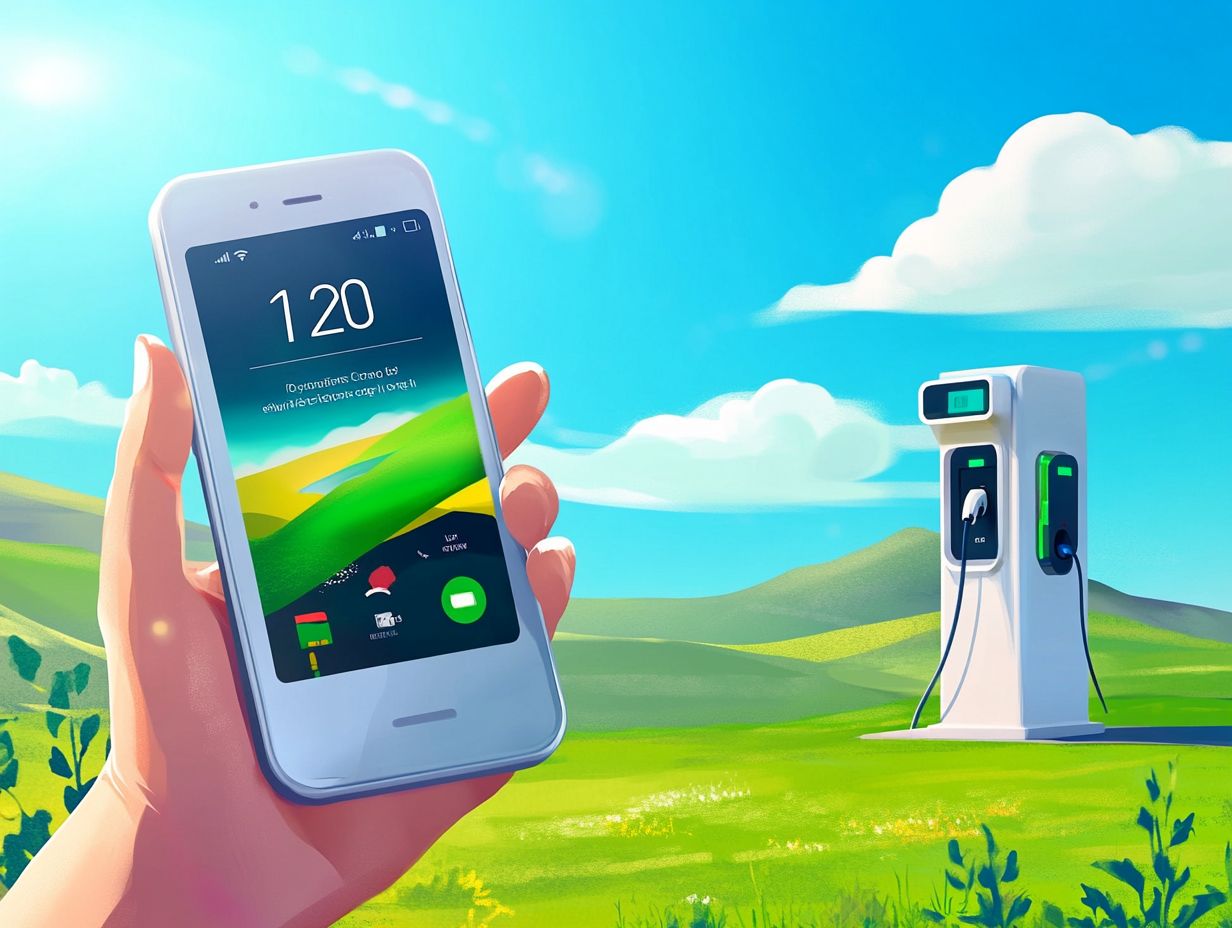
Using level 1 charging for your electric vehicle is cost-effective and convenient, especially with access to a standard 120V outlet. This method allows for gradual battery maintenance through a longer charging cycle.
Level 1 charging seamlessly fits into your daily routine. You can plug in your vehicle overnight or during extended periods of downtime.
For urban dwellers where high-speed charging stations might be scarce, this straightforward, low-impact solution helps lower your electricity costs and eases concerns about battery wear over time.
Level 1 charging promotes slower and steadier cycles. This enhances battery longevity and increases your vehicle s mileage.
5. Take Advantage of Charging Incentives
Taking advantage of various rewards for charging can significantly lower the up-front costs associated with purchasing and charging electric vehicles. You can benefit from tax credits, employer contributions, and government grants specifically designed to promote EV adoption.
Incentives vary by location. They can include local utility rebates for home charging stations and federal programs that support emission reductions.
For instance, some regions provide substantial benefits like the Federal Electric Vehicle Tax Credit, which can offset thousands of dollars. This financial assistance motivates you to make the switch and stimulates the used EV market.
What Are the Benefits of Owning an Electric Vehicle?
Owning an electric vehicle (EV) comes with many advantages. You can enjoy substantial savings on transportation and maintenance costs while positively impacting the environment.
Studies show you could save over $1,000 annually on fuel and maintenance compared to gasoline vehicles. Charging your EV usually costs much less than refueling with gasoline, often just a fraction of the cost per mile.
Each electric vehicle can prevent the emission of approximately 4.6 metric tons of carbon dioxide each year, contributing to cleaner air and a healthier planet.
Investing in an EV can promote social equity as these vehicles frequently qualify for incentives and rebates that make green technology more accessible.
What Are the Different Types of Charging Options for EVs?
Electric vehicles offer several charging options tailored to your needs, including level 1 charging, level 2 charging, and DC fast charging. Each option accommodates different driving patterns and provides flexibility in your charging routine.
Level 1 charging, the simplest form of charging using a regular home outlet, is perfect for overnight charging. It s especially useful for short daily drives.
Level 2 chargers, often found in public places or some residential setups, provide faster charging times. This option is great for fleet managers who need to maximize vehicle uptime during the day.
When a quick turnaround is essential, DC fast charging excels. It enables you to charge a significant amount of battery capacity in a short time ideal for long-distance travel or high-demand fleet operations.
With each option aligning seamlessly with varying charging patterns, both individual EV owners and fleet managers can select the charging strategy that best fits their unique needs.
How Can One Determine the Best Charging Strategy for Their EV?
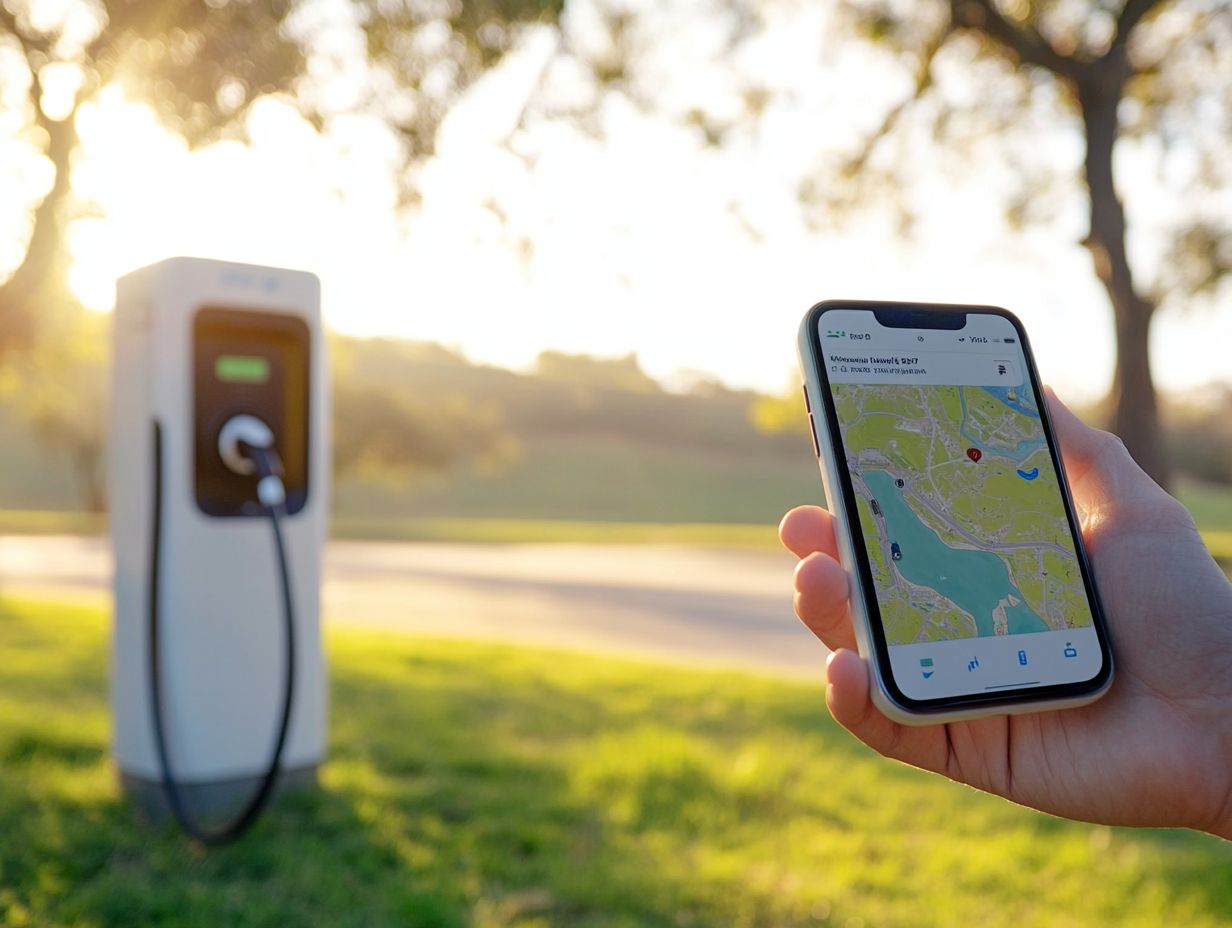
Finding the right charging strategy for your electric vehicle (EV) depends on several factors. Key elements include your charging flexibility and how you manage your energy use.
Consider your driving habits. How far do you drive daily? What times do you typically use your vehicle? Understanding these patterns helps you sync your charging schedule with your routine.
It’s important to know your energy needs. For example, think about your battery size and how efficiently your vehicle uses energy.
Smart charging apps can help a lot. They can show you nearby charging stations and notify you of the best times to charge based on energy prices.
What Are the Common Misconceptions About Charging Costs for EVs?
Many people misunderstand the charging costs of electric vehicles. This can lead to underestimating the overall expenses of owning an EV.
While some might think charging is expensive, many EV owners save money by charging at home, where electricity rates are lower than gas prices. Studies show that charging an EV can cost two to three times less than filling a gas tank.
When you factor in government incentives and lower maintenance costs, owning an EV can be financially rewarding. This shows that there are long-term savings to consider beyond just charging costs.
How Can Government Policies and Regulations Impact Charging Costs for EVs?
Government policies are crucial in influencing EV charging costs. They affect everything from utility usage to the development of charging stations.
Take Germany as an example. They have initiatives like the National Charging Infrastructure Development Plan, which aims to grow EV charging networks across the country. This effort encourages investment and lowers charging infrastructure costs.
In the U.S., similar policies like the Infrastructure Investment and Jobs Act are boosting funding for charging stations nationwide. This improves accessibility for consumers.
These examples show how effective government action can lower costs and support the growth of the EV market.
Explore your options today to maximize your EV savings!
What Are the Future Predictions for Charging Costs for EVs?
Future predictions for the costs of charging electric vehicles suggest an encouraging trend toward decreasing expenses as technology advances and the charging infrastructure evolves. Innovations like technology that lets your car send energy back to the grid are set to play a pivotal role in this transformation.
These advancements could revolutionize energy consumption and management, allowing you, as an electric vehicle owner, to sell any excess energy back to the grid. This not only enhances your energy efficiency but also creates potential income streams.
Improvements in battery leasing models significantly reduce the typical upfront financial burden associated with EV ownership. This means you won t need to spend a lot on individual battery purchases.
The rise of smart charging solutions promises to further lower your costs by enabling optimized charging during off-peak hours and balancing supply and demand! As these technologies grow popular, experts believe the future of EV charging will be more accessible and affordable than ever!
Frequently Asked Questions
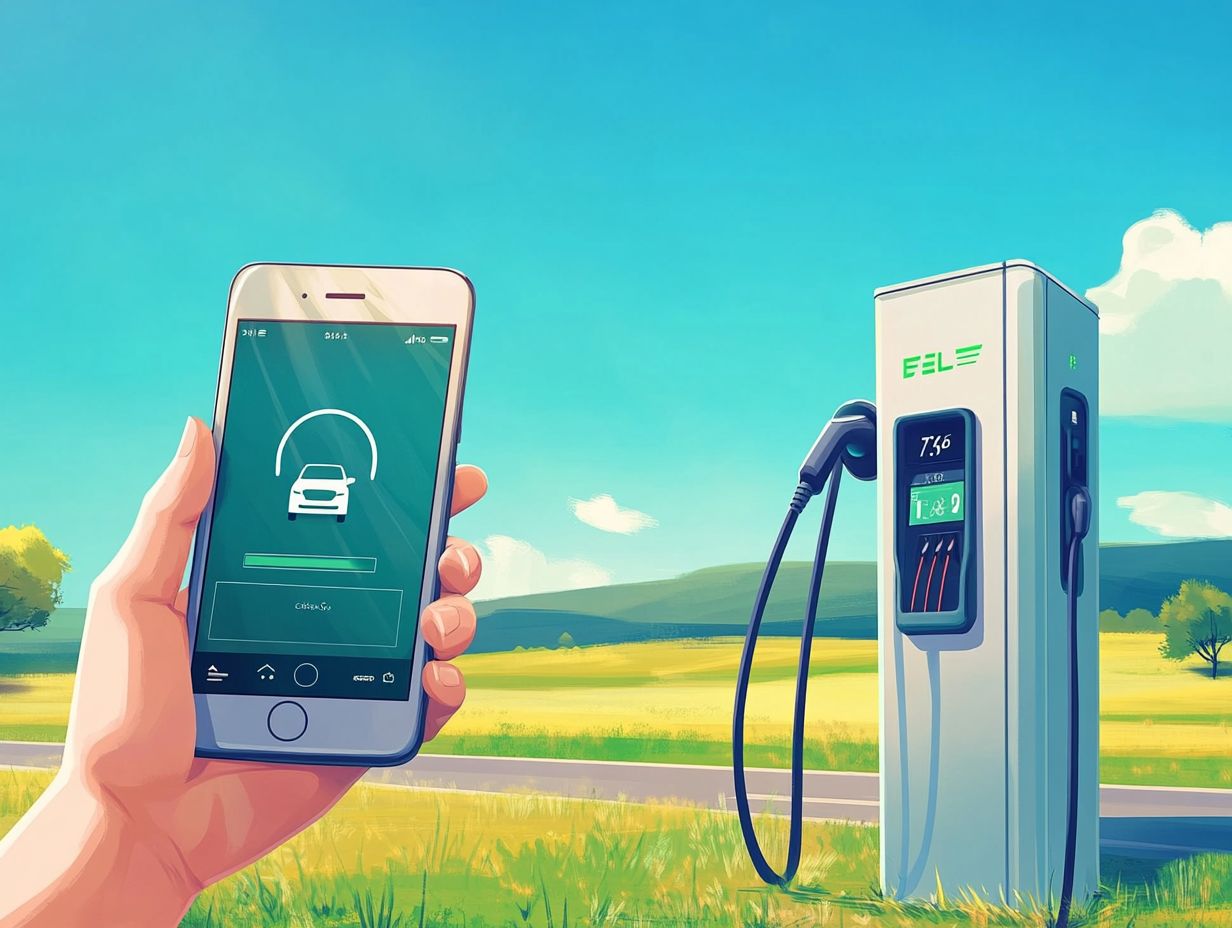
How can I reduce charging costs for my EV?
- Implement smart charging strategies
- Utilize public charging stations
- Take advantage of off-peak electricity rates
- Maintain proper tire pressure
- Use regenerative braking
What are smart charging strategies for EVs?
Smart charging strategies for EVs involve scheduling charging during off-peak hours, setting a charge limit to avoid overcharging, and using smart charging apps or devices to track and optimize charging usage.
How can public charging stations help reduce charging costs for EVs?
Public charging stations, especially those offering free or discounted charging, can help reduce costs by providing alternative sources of electricity outside of the home. Additionally, utilizing the most efficient EV charging strategies can also help alleviate range anxiety for longer trips!
Why is taking advantage of off-peak electricity rates important for reducing charging costs?
Off-peak electricity rates are typically lower than peak rates. This means you can save a lot of money by scheduling your EV charging during these times! It can save you a lot, especially if you charge often.
How does maintaining proper tire pressure help reduce charging costs for EVs?
Proper tire pressure can improve the overall efficiency and range of your EV. By ensuring your tires are properly inflated, you can reduce the energy consumption required for driving and therefore decrease the frequency and cost of charging.
What is regenerative braking and how does it help reduce charging costs for EVs?
Regenerative braking is a feature that helps your car save energy when you brake. This energy is then stored in the battery and can be used to power the vehicle, reducing the need for frequent charging and lowering overall costs.

